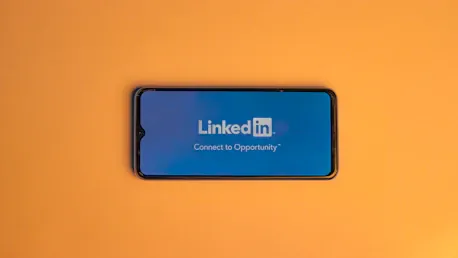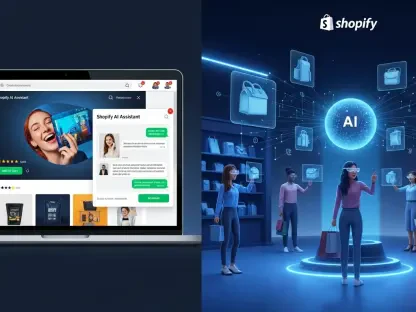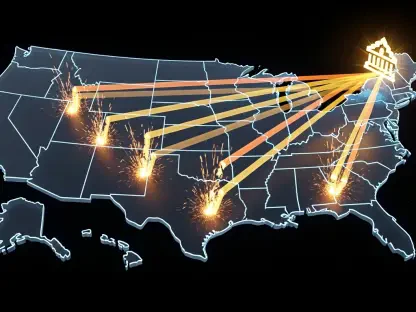Today, we’re diving into the fascinating world of AI and digital trends with Laurent Giraid, an expert in artificial intelligence with a deep focus on machine learning, natural language processing, and the ethics surrounding AI. Laurent shares his insights into the captivating trend of AI-generated action figures and its broader implications for digital creativity and self-presentation.
Could you explain what the “AI action figure” trend is all about?
Absolutely! The “AI action figure” trend is where individuals use AI to create digital images of themselves as action figures or dolls. These images often include professional-themed accessories and packaging, making them look like boxed toys you’d find in a store. It’s a playful way for people to showcase their personal and professional identities in a visually engaging manner.
How did the trend of creating AI-generated action figures begin?
The trend began to pick up steam after the viral success of Studio Ghibli-style portraits. Users started sharing images of themselves as boxed dolls on social media, particularly LinkedIn. The idea quickly resonated with professionals who saw it as a fun way to present their brand identities.
What role has ChatGPT’s image generation feature played in this trend?
ChatGPT’s image generation feature has been the driving force behind this trend. The tool allows users to upload photos and provide specific prompts to generate personalized action figure images. This easy-to-use functionality has made it accessible for a broad audience, fueling its popularity.
What is the process for a user to create their own AI action figure?
To create an AI action figure, users typically upload a high-resolution photo of themselves, often a full-body shot. They then provide a custom prompt describing the desired appearance, including details like name, accessories, outfit, and packaging style. Users can go through multiple iterations to get the perfect image.
What platforms have been most popular for sharing these AI-generated action figures?
LinkedIn has been the most popular platform for sharing these AI-generated action figures, serving as a hub for professionals who use the format for personal branding. However, the trend has also spread to other social media platforms such as Instagram, TikTok, and Facebook.
How has the trend evolved from LinkedIn to other social media platforms like Instagram, TikTok, and Facebook?
While LinkedIn remains the primary platform, the trend has evolved to reach other social media sites. On Instagram and TikTok, users have embraced the visual and creative aspects, sharing their action figures in more personal and diverse contexts. Facebook users have joined in, often highlighting the humorous side of the trend.
What are some common themes or styles users incorporate into their AI action figures?
Common themes include professional accessories like coffee mugs, laptops, and books, reflecting users’ professional lives. Some opt for a “Barbiecore” theme with vibrant pink tones and sparkles, while others stick to more corporate designs. The customization options allow for a wide range of personal expression.
How have brands like Mac Cosmetics and NYX participated in this trend?
Brands like Mac Cosmetics and NYX have joined the trend by creating their own branded action figures. This participation not only adds credibility to the trend but also increases its visibility and popularity among a broader audience. It shows how brands can leverage AI for innovative marketing strategies.
Did any public figures participate in this trend? If so, who, and what were their action figures like?
Yes, a few public figures have participated in the trend. For instance, US Representative Marjorie Taylor Greene shared an action figure of herself featuring a Bible and gavel as accessories. Such participation from public figures can significantly boost the visibility and appeal of the trend.
How is engagement with the AI action figure trend different from the previous Ghibli-style portrait trend?
Engagement with the AI action figure trend is different in that it hasn’t reached the same viral intensity as the Ghibli-style portraits. The action figure images tend to receive limited interaction compared to the Ghibli portraits, which saw a massive surge in daily active users and infrastructure stress on platforms like OpenAI.
Why do you think the Barbie/action figure trend hasn’t received as much criticism as the Ghibli portrait craze?
The Barbie/action figure trend may not have received as much criticism because it feels more lighthearted and playful. It’s seen as a fun and creative way for professionals to express themselves, without the same expectations or cultural implications that come with Ghibli-style portraits.
What conversations has this trend sparked about identity and self-presentation in digital spaces?
The trend has sparked interesting conversations about how we represent our identities online. It highlights the blend of humor and professionalism, and how digital tools can help in crafting personal brands. It also raises questions about authenticity and the ways we curate our online personas.
What makes the AI action figure format appealing to users?
The format’s appeal lies in its simplicity and creativity. It allows users to engage with AI-generated art without needing technical skills and provides a fun way to express their identities and professional personas. The novelty and humorous aspect make it enjoyable and shareable on social media.
How could tools like ChatGPT change the way people represent themselves online?
Tools like ChatGPT could revolutionize online self-representation by making advanced digital creativity accessible to everyone. They allow users to create personalized, high-quality images and content, thereby enhancing personal branding and creative expression in ways that were previously difficult to achieve.
Do you have any advice for our readers?
My advice to readers is to embrace these new AI tools and experiment with them. They offer incredible opportunities for creativity and professional branding. Stay curious, keep learning, and don’t be afraid to showcase your unique identity in the digital world.









